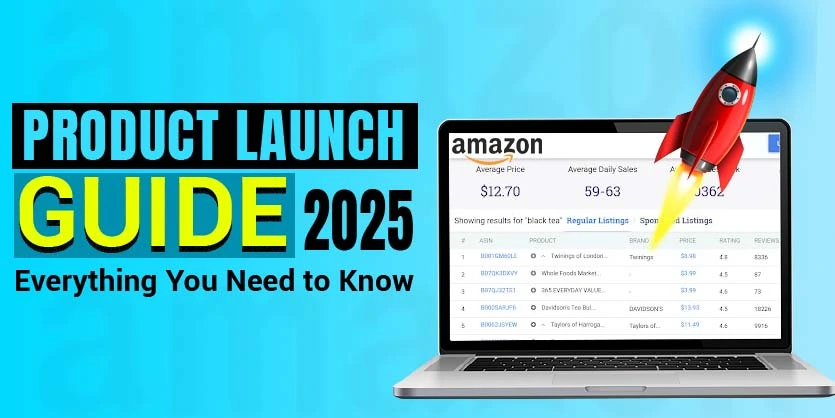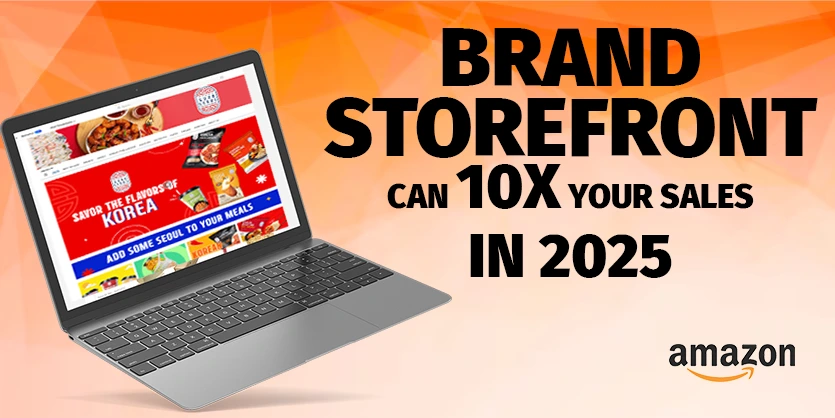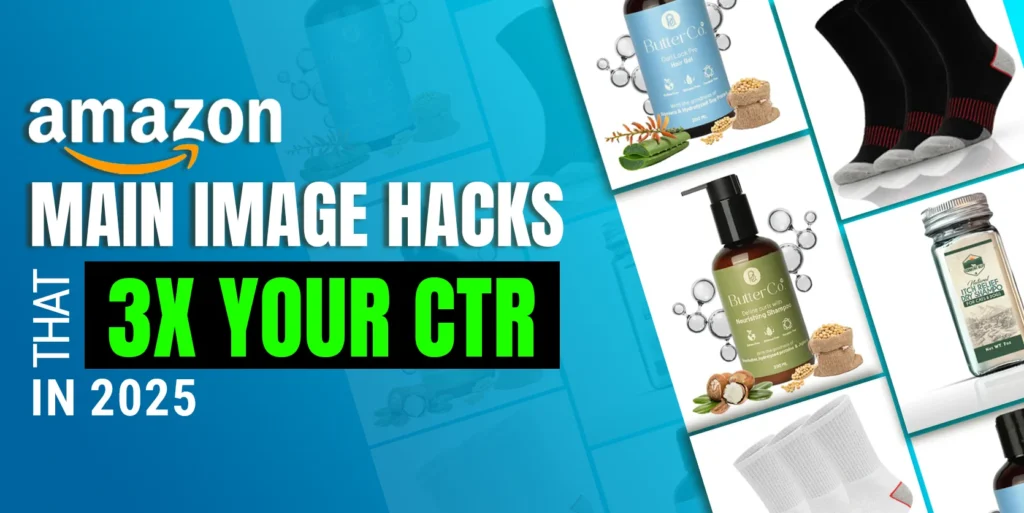Introduction
Launching a product on Amazon in 2025 requires a well-structured and data-driven strategy. With competition at an all-time high, sellers need a comprehensive approach to stand out and achieve success. The Ecomclips checklist has proven to be one of the most effective launch strategies, helping both new and existing sellers maximize their product’s potential. This guide will break down each phase of the launch strategy, ensuring a seamless and profitable entry into the market.
In this guide we will cover three steps of ecomclips Prodluct Launching Strategy-
- Pre-Launching Phase
- During Launching Phase
- Post- Launching Phase
Stage 1: Pre-Launch Phase

Need for a Professional Seller Account
To sell on Amazon efficiently, it is crucial to set up a Professional Seller Account. This account type provides access to Amazon’s advertising tools, detailed analytics, and the ability to sell in multiple categories.
Product Research
Importance of Choosing the Right Product
Product selection is the foundation of success. Choosing the right product ensures demand, profitability, and scalability.
You can use tools like Helium 10 or Jungle scout.
These tools help analyze market trends, estimate sales volume, and assess competition.
Three Key Criteria:
- High Demand: Look for products with consistent sales trends.
- Low Competition: Find products with manageable competition.
- Good Profit Margin: Ensure profitability after Amazon fees, shipping, and other costs.
# Competitor Analysis
Analyzing competitors’ listings and strategies is crucial for gaining insights into what works in your market and what doesn’t. By studying your top competitors, you can identify their strengths, weaknesses, and opportunities. This process helps you understand customer preferences, pricing trends, product positioning, and even gaps in the market that you can leverage to improve your own business strategy.
Identifying Gaps in the Market Using Customer Reviews
Analyzing negative reviews reveals opportunities for product improvements.
# Product Sourcing
1. Common Sourcing Platforms
- Alibaba: The largest supplier marketplace.
- Alternative Countries: Consider India, Vietnam, and Mexico for diversification.
2. Evaluating Suppliers
- Authenticity: Verify credentials and customer feedback.
- Pricing: Compare multiple suppliers to get the best deal.
- Quality: Order samples to test product durability.
- Logistics: Ensure suppliers can meet deadlines and Amazon’s requirements.
3. Ordering and Testing Product Samples
Test samples for quality, packaging, and potential improvements before placing a bulk order.
# Brand Registry & Trademark
After conducting thorough product research and sourcing, the next crucial step is to create a brand registry and trademark your products. This helps protect your intellectual property and establish your brand’s identity. With a registered trademark, you gain exclusive rights to your brand name, logo, and other distinctive elements. It also strengthens your position on platforms like Amazon, enabling access to additional tools like A+ Content and Enhanced Brand Content, which can improve visibility and sales. Additionally, trademarking prevents potential legal issues and counterfeit products, safeguarding your brand’s reputation.
1. Applying for Amazon Brand Registry
Registering as a brand on Amazon provides access to A+ Content, Brand Analytics, and better protection against counterfeiters.
2. Securing a Trademark Using IP Accelerator
Amazon’s IP Accelerator speeds up trademark registration, allowing quicker access to Brand Registry benefits.
# Keyword Research & SEO Optimization
Now we need to do keywords research for adding in the title and product description and in the bullet points. For the product reaserach we can do a lot of things– we can use keywords research tools like helium 10. Jungle scout. These two are mostly known and has world wide familiarities. Also you can use Amazon Search Bar
1. Using Amazon’s Search Bar and Competitor Listings
Researching keywords ensures your product appears in relevant searches.
2. Writing an SEO-Friendly Product Title, Bullet Points, and Description
Optimizing product content improves visibility and conversions.
# Creating High-Quality Listing Content
1. Importance of Compelling Images and Infographics
High-quality visuals attract customers and boost conversions.
2. A+ Content and Brand Story Benefits
Enhanced product descriptions improve customer engagement and trust.
# Pricing Strategy
A competitive yet profitable pricing strategy ensures that your products are attractive to customers while still allowing for healthy profit margins. It’s essential to research your competitors’ pricing to stay within market range but also consider your cost structure to avoid undervaluing your product. By using techniques like psychological pricing, bundling, or offering discounts strategically, you can enhance your sales without compromising on profitability.
Here you can find the detailed pricing strategies that we ecomclips follow-
Amazon Pricing Strategies – The Ultimate Pricing Guide for Sellers
# FBA Setup
1. Sending Inventory to Amazon Warehouse
Efficient inventory shipment ensures seamless order fulfillment.
2. Ensuring Stock Availability Before Launch
Avoiding stockouts prevents lost sales and ranking drops.
# Final Pre-Launch Checklist
Double-checking all elements before setting a launch date is crucial to ensure everything is in place for a smooth start. This includes verifying product listings, inventory levels, marketing materials, and fulfillment processes to avoid any last-minute surprises. By carefully reviewing each detail, you can identify potential issues early and make adjustments, setting yourself up for a successful and seamless product launch.
Stage 2: Launch Phase

Reviewing Listings Before Launch
During the launch Phase first step is to reviewing listing before launch. And you must keep in mind to ensuring No mistakes in content, Images, and pricing and final checks help maintain professionalism and accuracy.
Stock Management
Effective stock management starts with planning inventory based on an accurate initial sales forecast. By analyzing past sales data, market trends, and seasonal demand, you can determine the optimal stock levels to meet customer needs without overstocking or running out of stock. Regularly reviewing and adjusting your inventory based on sales performance helps maintain a balance, ensuring you’re prepared for fluctuations in demand while minimizing storage costs and the risk of unsold stock.
# Marketing & Promotion Strategy
1. Running Amazon PPC Campaigns
Well-structured ad campaigns boost visibility and sales.
2. Social Media Promotions, Influencer Marketing, Blog Content
External traffic increases Amazon rankings and brand awareness.
3. Offering Limited-Time Discounts
Temporary promotions encourage early sales and reviews.
# Canonical URL Setup
Canonical URL setup is an essential part of optimizing your website for better search ranking. By ensuring that each page has a unique and properly structured URL, you help search engines index your content more efficiently, avoiding duplicate content issues. Properly setting canonical URLs directs search engines to the preferred version of a page, boosting your site’s discoverability and improving its chances of ranking higher in search results. This helps to consolidate page authority and ensures your content gets the visibility it deserves.
How to set up canonical URL? Watch this – How To Set & Optimize Amazon Canonical URL
#Executing the Launch
Ensuring All Strategies Are in Place for a Successful Launch
Executing the launch with a well-rounded strategy helps create a buzz and drives immediate traffic to your product. By aligning marketing, promotions, and customer engagement tactics, you set the stage for strong initial sales and sustained growth. And ensure all strategies are in place for a successful launch.
Stage 3: Post-Launch Phase

# Getting Reviews
Early reviews are crucial for establishing credibility and social proof, influencing potential buyers’ decisions. By actively encouraging satisfied customers to leave feedback, you not only improve conversion rates but also enhance your product’s visibility and ranking on e-commerce platforms.
# PPC & Advertising Strategy
Now, SEO are for the organic ranking but beside that if you do PPC to promote your listing that are the extra push you can get. It helps raking and makes your products familiar but for that you need to spend money on it.
Also read- Amazon Pricing Strategies – The Ultimate Pricing Guide for Sellers
2. Inventory Management & Restocking
Effective inventory management relies on closely monitoring sales trends and utilizing Amazon’s Restock Reports to forecast demand. By analyzing historical data and sales patterns, you can predict when and how much inventory to reorder, preventing stockouts and ensuring your listings remain available. Data-driven restocking allows you to maintain optimal stock levels, maximize sales, and reduce excess inventory that can lead to additional storage fees.
# Maximizing the Honeymoon Period
Maximizing the Honeymoon Period, which spans the first 60-90 days of a product’s launch, is crucial for establishing early momentum. During this time, Amazon’s algorithm gives your product an initial push to test its performance, including visibility and ranking. This period is an excellent opportunity to gather early reviews, optimize your listings, and run targeted ads to boost visibility and conversions. By focusing on strong marketing efforts and inventory management during this phase, you can maximize the benefits of Amazon’s algorithmic boost and set your product up for long-term success.
The first few weeks are critical for organic ranking gains.
Conclusion
A well-executed launch strategy is the foundation for a successful Amazon product launch. It requires meticulous planning, from researching and sourcing your product to creating effective listings and ensuring inventory is stocked. Precise execution, including optimizing ads and managing reviews, ensures visibility and sales during the critical honeymoon period. Ongoing optimization, like adjusting pricing and stock levels, keeps the momentum going.
At Ecomclips, we offer expert services that streamline the launch process, providing tailored support for every stage. Our professional team helps you optimize your strategy, ensuring your product reaches its full potential from day one.
We can email us at info@ecomclips.com and set a free consultation with us.
Sellers looking for expert guidance can reach out to us for a free consultation. We’ll provide personalized advice and actionable insights to help your business thrive in the competitive e-commerce world. Launching a product on Amazon in 2025 requires strategic execution, and by following this guide, you can set yourself up for long-term success. Stay ahead of the competition with the right planning, optimization, and support.



